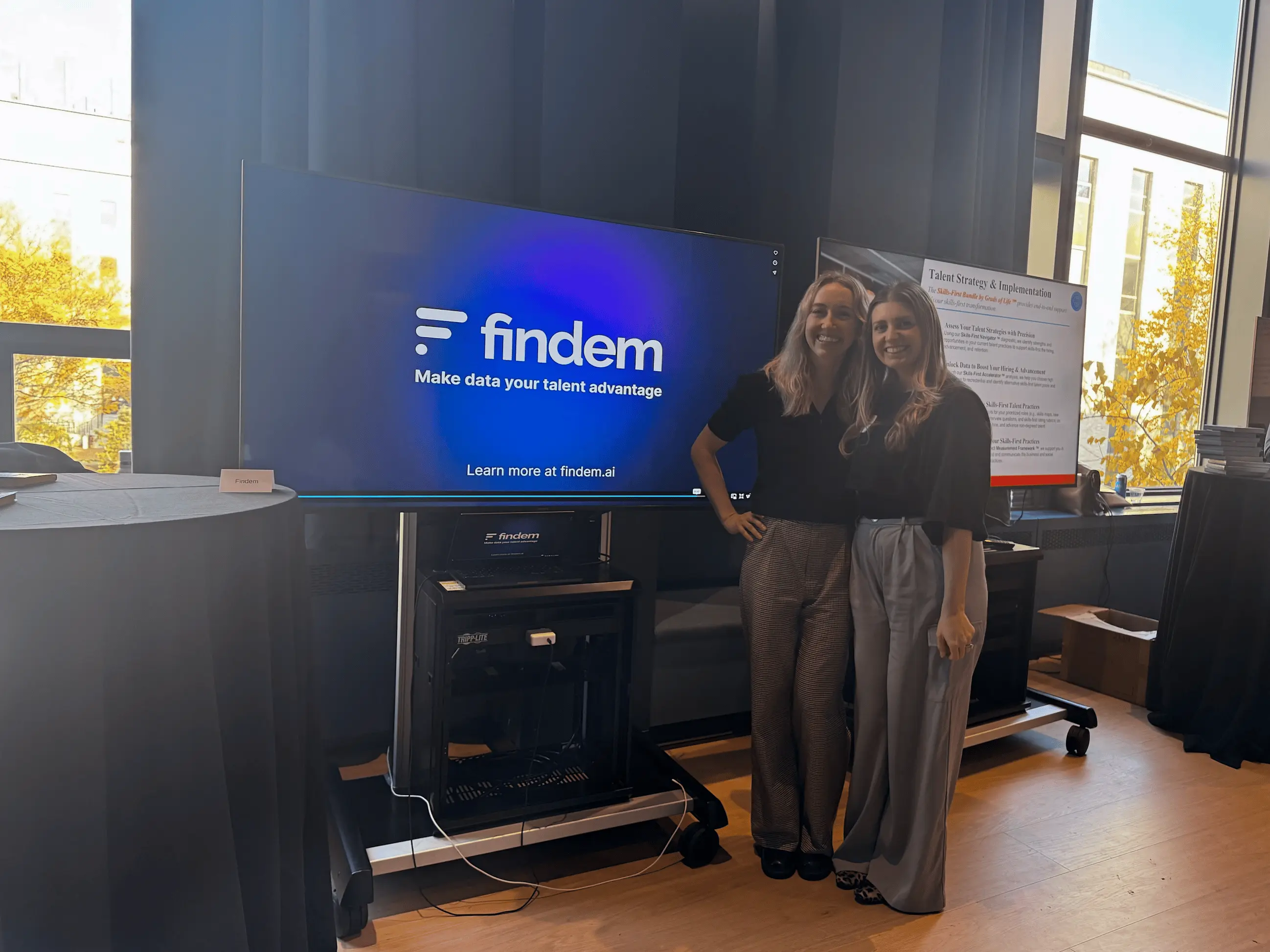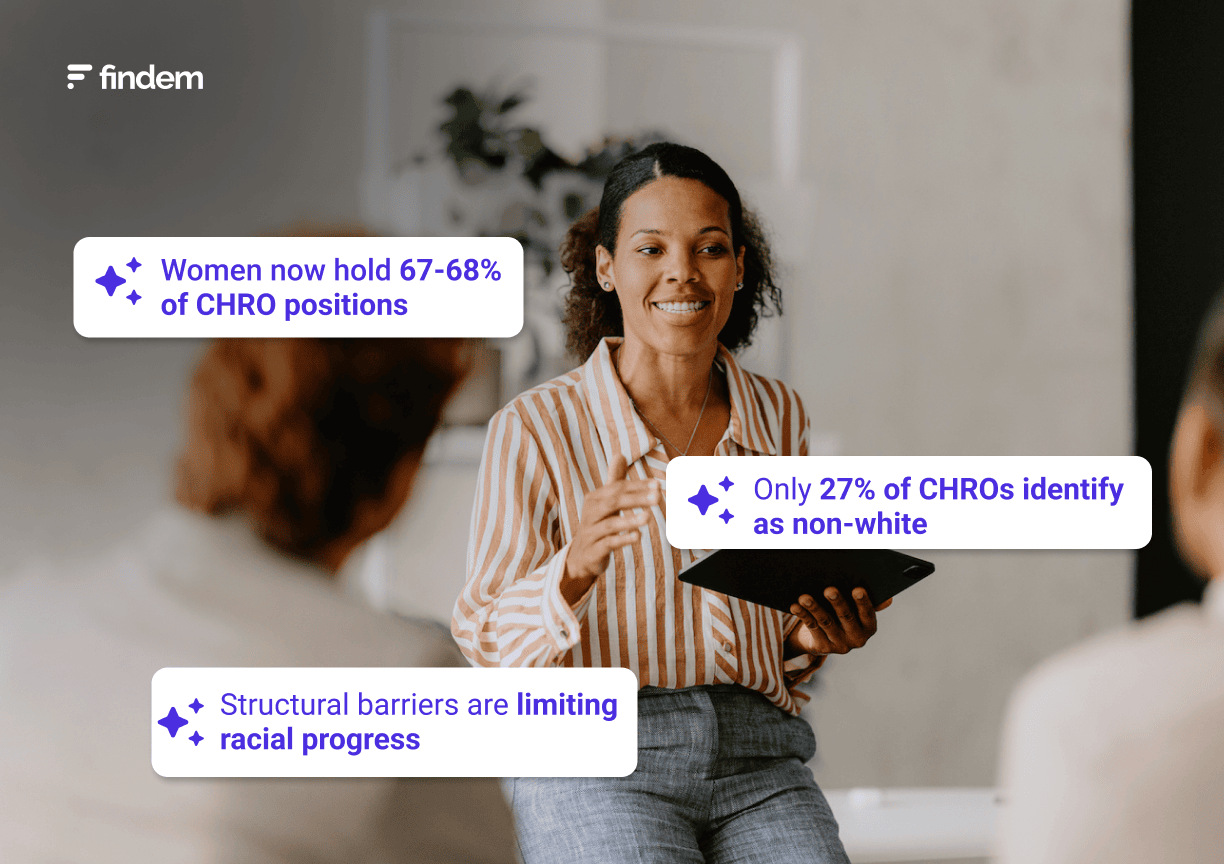.svg)
Measuring AI impact in talent acquisition: ROI-focused metrics that matter
.svg)

Implementing AI in talent acquisition is delivering positive results: 85% of organizations are satisfied with their AI investments.
Still, many businesses struggle to prove the true value of these investments. According to recent research, 41% of HR professionals say AI has increased their workload, and 25% believe it has made their jobs harder. Only 7% of organizations consider their talent acquisition efforts “world class.” Clearly, satisfaction with technology doesn’t always translate to measurable impact or clarity on how to demonstrate ROI.
This article outlines how talent teams can close that measurement gap. We explore traditional and advanced TA metrics, frameworks to tie AI to ROI, and the data foundations required to make it all work.
The measurement gap: Why traditional metrics fall short
Recruiters often rely on “vanity metrics” like pipeline volume or the number of offers made — figures that look impressive on a dashboard but don’t always reflect real value.
As recruiting strategist Brian Fink points out, “Pipeline volume. Number of coffee chats. How many passive candidates you engaged last quarter. These are internal metrics, and yes, they may make your dashboard look like Times Square on New Year’s Eve. But they are not value. They are noise."
Moving beyond noise can be tough. Deloitte found that only 17% of organizations feel confident measuring the true value created by their people. As Eli Kamerow, Head of U.S. Business at Darwinbox, notes, metrics like “time to hire” can feel irrelevant to business leaders unless you link them to long-term business impact.
From activity to impact: A new framework for measuring AI ROI
Traditional, activity-focused metrics: "So-so"
- Pipeline volume
- Conversations and applications
- Number of screens, interviews, and offers made
Improved, process-focused metrics: "Better"
- Hiring time and cost reductions
- Efficiency and time-to-impact
- Internal mobility rates
Business impact metrics: "Best"
- Days to begin new contracts
- Revenue per hire
- Increased customer conversion rates
- Impact of candidate experience on revenue
- Percentage of projects delayed due to talent gaps
AI enables the shift from so-so to best-in-class measurement by providing richer, business-oriented data points that matter.
Real-world ROI: How companies are proving value
Cost savings
Cost per hire isn’t the only ROI lever, but it’s a big one. Aptahire reports companies using AI-powered solutions can see up to 30% in cost savings.
Take a San Francisco–based relationship intelligence platform: by using attributes to identify traits like coachability, domain experience, or being a self-starter — going beyond keywords or even skills — the team slashed LinkedIn spend by 90%. Overall, they saved 70% across their hiring tech stack.
Recruiter efficiency
Another angle? Time savings and workflow automation. Box, for example, had data fragmented across its ATS, CRM, and sourcing tools. After consolidating platforms and automating workflows, Box reduced search kickoff time by 3–5 hours per role.
More importantly, pipeline quality improved. Employee referrals and warm leads now make up about one-third of Box’s candidate pool, driving faster, higher-quality hires and reducing outbound efforts.
AIHR recommends a similar focus: “Recruitment funnel effectiveness.” Ask not just how many offers were made, but how many were accepted. Of the candidates submitted to hiring managers, how many advanced? That’s where efficiency translates into results.
Candidate quality and diversity
The myth that AI increases bias is being debunked. In fact, AI can actually help reduce it. Warden AI found that AI-driven systems treat women up to 39% more fairly — and racial minority candidates up to 45% more fairly — compared to human decisions. Their study analyzed more than a million samples, audits, surveys, and public reports.
At RingCentral, AI contributed directly to diversity outcomes. By using Findem’s Talent Data Cloud to unify sourcing, embrace multichannel strategies, and apply attribute-based filters, the team saw 40% more engagement from underrepresented talent groups.
Why quality measurement requires quality data
Data quality is foundational: 70% of AI projects fail because of siloed, incomplete, or inconsistent data. Decision-makers can’t improve hiring practices or accurately report ROI without trusted, unified information.
Findem’s 3D data approach — aggregating and enriching signals from ATS solutions, CRMs, public sources, and more — creates complete, time-aware candidate profiles. This unique data ensures talent teams access current, comprehensive insights that directly reflect a candidate’s business impact.
Calculating your AI investment return
Third-party studies reinforce the case for AI-powered hiring. Techtree found that AI delivered 10–20x ROI per hire, based on efficiencies in response rates, scheduling, and recruiter time.
Scout Talent reports that midsize companies (50–200 employees) saw a 2.5x–6.6x return on every dollar spent on AI recruiting technology, with larger organizations seeing up to 19.6x returns. Beyond cost and speed, AI’s ability to consistently identify the best-matching candidates drives higher quality — and ultimately, better business outcomes.
Beyond the numbers: Strategic impact
AI-driven measurement offers more than ROI. It delivers a competitive advantage.
Take alumni and referrals: company alumni have 82% higher reply rates, and referrals consistently outperform other sources. These insights let teams build recruiting cultures where every employee contributes.
Competitive intelligence is another frontier. With the right data, you can monitor competitor job postings, analyze hiring patterns, and track in-demand skills or diversity trends. These inputs help shape better, faster, and more aligned hiring strategies.
Kaitlyn Koechle, GTM Recruiter at Box, sums it up well: “Having data and digestible visuals at our fingertips has helped our team spend less time on manual research and more time acting as true advisors to the business.”
Getting started with AI impact measurement
Circling back to Brian Fink’s dashboard metaphor: vanity metrics aren’t enough. To measure AI’s real impact, teams need to think beyond the basics.
“Hiring isn’t about filling seats,” Fink says. “It’s about solving problems. Launching products. Scaling operations. Reducing churn. Expanding markets. Every hire should tie directly to a business case — like increasing landing page conversion by 15%, or unlocking two new sales territories.”
He recommends metrics like:
- Time to impact (how quickly a hire delivers value)
- Revenue per hire
- Retention rates
- Hiring manager satisfaction
The key is to start. As Chris Galy writes: “By defining processes and expected outcomes, then measuring them from end to end, talent and HR leaders can pinpoint what’s working and what’s not. Without the right measurements and KPIs, it’s hard — especially during lean times — to request funding to make improvements.”
The path forward: A measurement-driven strategy
We’ve seen firsthand what happens when companies adopt a measurement-first mindset. They unlock better ROI, build trust with leadership, and make faster, more strategic hires.
Need help figuring out where to begin? We’ve guided dozens of teams through AI implementation and success measurement. Let us know if you’d like to talk.










